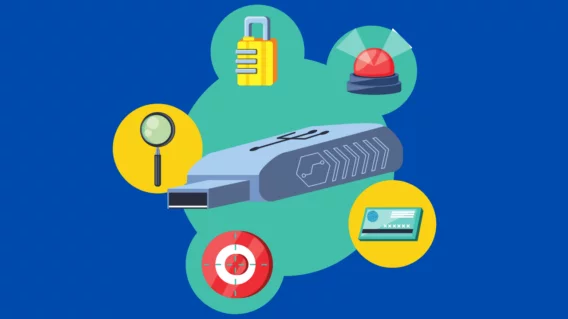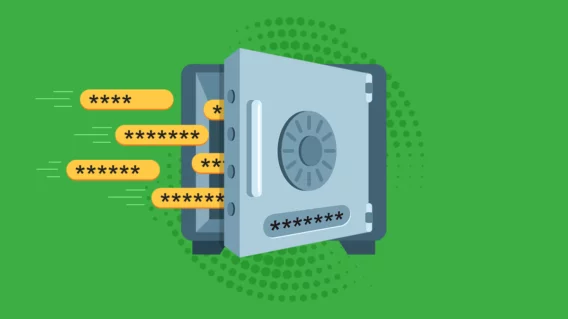Small Devices, Big Threats: The Dark Side of Removable Devices

“The greatest mistake is to imagine that we never err.”
– F. Thomas Carlyle
In today’s digital world, where cloud storage reigns supreme, the humble removable device – the USB drive, external hard disk, or even an SD card – might seem like a relic of the past. However, these convenient little gadgets are still surprisingly popular. Their portability and offline accessibility make them an attractive option for transferring data, backing up files, or even installing software.
Unfortunately, this convenience comes with a hidden cost: security vulnerabilities. While cloud storage offers its own set of security concerns, removable devices present a unique set of threats that can expose both individuals and businesses to data breaches, malware infections, and unauthorized access.
To understand the full scope of the security challenges posed by removable devices, it is essential to consider the three pillars of cybersecurity – people, processes, and technology. Each of these pillars plays a crucial role in safeguarding sensitive data and preventing unauthorized access.
Human Error: The Achilles’ Heel of Cybersecurity
One of the biggest security weaknesses is human error. We all make mistakes, and when it comes to removable devices, these mistakes can be costly:
- Accidental Data Transfer: You might accidentally copy sensitive information onto a drive that later gets lost or stolen.
- Unsecured Devices: Leaving a drive unattended creates a risk of unauthorized access.
- Malware Downloads: There are likely chances that you might unknowingly download malicious software from an infected drive.
Removable Devices: Your Portable Data Companions
Removable devices, those handy little gadgets that plug into your computer or other devices, have been a staple in our digital lives for years. Whether you’re a tech-savvy individual or simply someone who needs to store a few important files, there’s a removable device out there to suit your needs.
Some of the most common types of storage devices include USB drives, which are often referred to as flash drives or thumb drives, and external hard disks, which come in both Hard Disk Drive (HDD) and Solid-State Drive (SSD) formats. Another popular option is memory cards, such as SD and MicroSD cards, as well as optical discs, including CDs, DVDs, and Blu-ray discs.
Why Removable Devices Still Hold Sway
Despite the rise of cloud storage, removable devices have their place due to following:
- Portability: You can easily carry them and use them anywhere, even without an internet connection.
- Software installation: Running applications or installing software from a removable device without needing an internet connection.
- Removable devices offer faster file transfer speeds: This is a key benefit of using USB drives or external hard disks for large file transfers, as they can often transfer data at higher speeds than cloud-based solutions.
- Cost-effectiveness: For small data sets, a removable device might be cheaper than a cloud storage subscription.
- Physical control: Some users prefer having physical control of their data over cloud storage, which can be susceptible to server breaches.
- Compatibility: They work with a wide range of devices and operating systems.
USB Dangers: Are Removable Devices Still a Threat in 2024?
A 2024 Honeywell’s USB Threat Report revealed that USB devices continue to be used as an initial attack vector into industrial environments, with 51% of malware designed to spread via USB.
Potential Threats From Removable Devices
Removable devices can introduce a variety of security vulnerabilities, including:
- Malware Infections: Malicious software can easily hide on a removable device. When plugged in, the malware can automatically install itself, infecting your system and potentially stealing data, corrupting files, or even taking control of your device. Real-World Example: SOGU Malware (2023) was distributed via USB drives and attributed to the TEMP.Hex cyber espionage group. This malware primarily targeted industries across various geographies to steal sensitive information. Attackers used USB drives to load the SOGU malware onto host systems. The malware executes when the USB drive is inserted, enabling data theft and potentially providing attackers with a foothold for further actions. It has affected multiple industries and posed a significant risk to sensitive data handling.
- Unauthorized Data Access: Sensitive data stored on removable devices can be accessed by unauthorized individuals if the device is lost, stolen, or left unattended. Real-World Example: SNOWYDRIVE Malware (2023) targeted oil and gas organizations in Asia. Delivered through USB drives, it created a backdoor on infected systems, which allowed attackers to control the system remotely. Once running, SNOWYDRIVE setup remote access capabilities, allowing attackers to spread further. This malware facilitated remote control and data exfiltration, posing significant risks to critical infrastructure organizations, especially in the energy sector.
- Data Theft: Individuals with malicious intent can use removable devices to steal data from unsuspecting users. This can be done by physically stealing the device or using techniques like autorun viruses that automatically launch upon plugging the device into a computer. Real-World Example: Mitsubishi Electric Data Breach (2020), a major Japanese multinational, suffered a data breach in 2020 involving the theft of sensitive corporate information. An employee used a USB drive to steal and transfer confidential data, including technical specifications and corporate strategy documents, to a personal device. The breach exposed sensitive corporate data and raised concerns about the company’s data protection practices. Mitsubishi Electric faced scrutiny from regulatory authorities and responded by tightening its data security protocols, especially regarding the use of removable media.
How These Threats Affect Businesses and Individuals?
For Businesses:
- Data Breaches: Lost or stolen removable devices containing sensitive company data can lead to costly data breaches, damaging brand reputation and incurring significant financial penalties.
- Compliance Violations: Failure to properly manage removable devices can result in non-compliance with industry regulations, leading to legal consequences.
- Operational Disruption: Malware infections from removable devices can cripple business operations, causing downtime, productivity loss, and potential financial losses.
For Individuals:
- Identity Theft: Removable devices containing personal information like financial records, passwords, or social security numbers can be a treasure trove for identity thieves.
- Financial Loss: Malware infection from removable devices can lead to financial loss by stealing sensitive information like bank account details or credit card numbers.
- Data Loss: Lost or damaged removable devices can result in permanent data loss, causing sentimental or professional setbacks.
Best Practices for Secure Use of Removable Devices
- Educate Users: Train employees and individuals on the risks associated with removable devices and how to use them securely.
- Implement Policies and Procedures: Establish clear policies outlining the proper use of removable devices, including restrictions, training requirements, and data encryption practices.
- Scan All Removable Devices: Before using a removable device, always scan it with a reputable antivirus program.
- Disable Autorun: Disable Autorun to reduce the risk of malware automatically executing.
- Encrypt Sensitive Data: Encrypt sensitive data before transferring it to a removable device.
- Limit Removable Device Usage: If possible, restrict the use of removable devices in high-security environments or for sensitive data.
- Implement Removable Device Control Solutions: Consider using specialized software to control removable device usage and prevent unauthorized data transfers.
- Regularly Update Security Software: Ensure that your antivirus software and other security tools are up-to-date.
Emsisoft Enterprise Security: Removable Device Control
To manage and monitor external devices, Emsisoft has introduced a new feature called Removable Device Control in its Enterprise Security edition. This feature allows organizations to manage and control the use of removable devices within their network, reducing the risk of malware infections and data breaches. With Removable Device Control, administrators can control which devices can be connected to the network, monitor usage and enforce policies.
Emsisoft Endpoint Protection: Award-Winning Security Made Simple
Experience effortless next-gen technology. Start Free TrialConclusion
While removable devices offer undeniable convenience and utility, they also pose significant security risks. By understanding these risks and implementing appropriate security measures, both businesses and individuals can protect themselves from the potential dangers associated with these devices.


